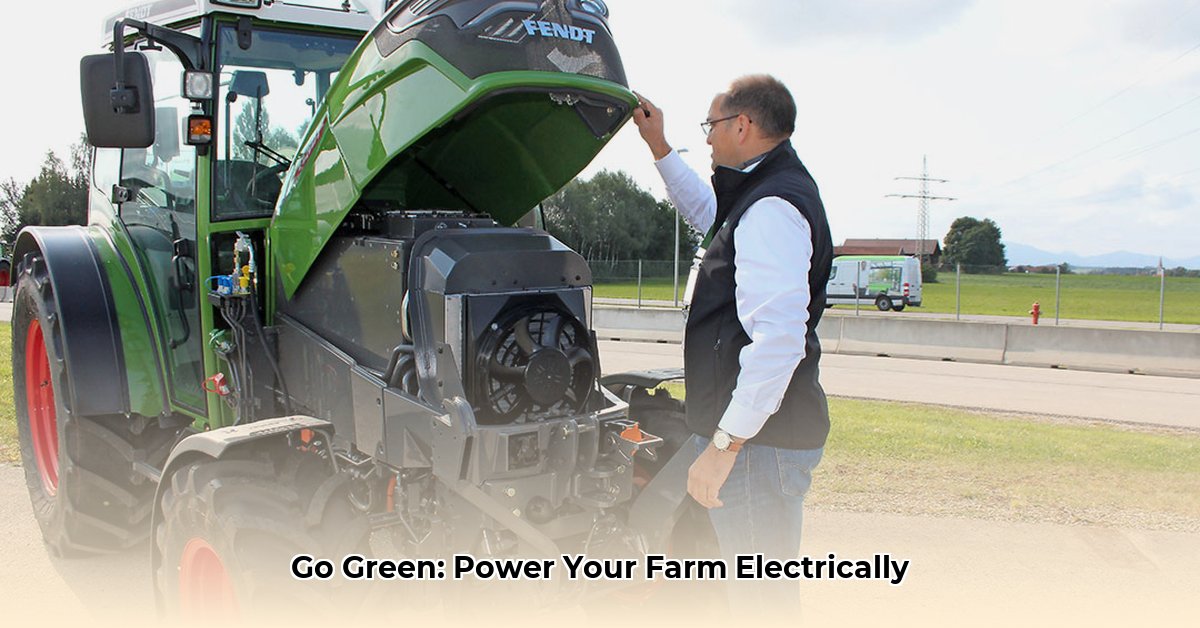
Powering your farm with electric motors offers a compelling blend of sustainability and efficiency. This comprehensive guide will help you navigate the world of electric motors at Tractor Supply, ensuring you choose the right equipment for your specific needs and achieve a strong return on investment. We'll cover everything from selecting the appropriate motor to installation, maintenance, and troubleshooting.
Understanding Your Farming Needs and Budget
Before diving into the specifics of electric motors, it's crucial to assess your farm's needs. What tasks require motorization? Is it a small-scale irrigation pump, a grain auger, or a larger ventilation system for your barn? The scale of your operation and the specific application will dictate the type and power of the motor you'll need. Remember that while electric motors often have lower operating costs, the initial investment can be higher than comparable gas-powered engines. Therefore, a realistic budget is paramount. How much can you afford to invest upfront, factoring in not only the motor itself but also installation and potential electrical system upgrades?
Exploring Electric Motor Options at Tractor Supply
Tractor Supply likely offers various electric motors, each with unique characteristics. Let's examine some common types:
AC Induction Motors: These robust and relatively inexpensive motors are ideal for straightforward tasks such as powering water pumps or conveyor belts. They are known for their reliability and simplicity.
DC Brushless Motors: Offering precise speed control and high efficiency, these motors are better suited for automated systems or applications requiring fine control. While more expensive upfront, their energy efficiency translates to long-term cost savings.
Universal Motors: These versatile motors operate on both AC and DC power, offering flexibility. However, they may be less energy-efficient than other options.
Beyond the motor type, consider the horsepower (HP) rating. This indicates the motor's power output and must match the demands of your machinery. Underpowering a motor can lead to overheating and premature failure, while overspending on excess power is wasteful.
Choosing the Right Electric Motor: A Practical, Step-by-Step Guide
Selecting the correct electric motor is a crucial step. Follow this detailed guide to ensure compatibility and optimal performance:
Calculate Power Needs: Consult the manufacturer's specifications for your equipment to determine the required horsepower (HP). Never underestimate this value; insufficient power leads to strain and premature failure.
Verify Voltage and Current Compatibility: The motor's voltage (e.g., 120V, 240V) and amperage (current) must match your power supply. Mismatches can cause damage or even fire hazards.
Consider Duty Cycle: Assess how long the motor will run continuously. Continuous-duty motors are required for prolonged operation, while intermittent-duty motors suffice for shorter bursts. Incorrect selection results in overheating.
Select the Appropriate Enclosure: The motor's enclosure type must match the operating environment. Open motors are suitable for clean, indoor settings, while enclosed or totally enclosed motors are necessary for dusty or wet conditions.
Ensure Proper Mounting: Verify that the motor's mounting features are compatible with your equipment. Incorrect mounting causes vibrations, wear, and potential failure.
Prioritize Safety: If you lack electrical experience, hire a qualified electrician for installation. Improper installation is hazardous and can cause equipment damage or injury. Always consult the manufacturer's safety guidelines.
The Pros and Cons of Electric Motors in Farming
Electric motors offer significant advantages but also have limitations. A balanced perspective is essential:
| Feature | Advantages | Disadvantages |
|---|---|---|
| Environmental Impact | Reduced greenhouse gas emissions and quieter operation. | Battery disposal and manufacturing processes still have environmental impacts. |
| Operating Costs | Lower running costs due to the relatively lower cost of electricity than fuel. | Higher initial purchase price compared to equivalent gas engines. |
| Maintenance | Less frequent and generally simpler maintenance needs. | Specialized expertise may be required for certain repairs. |
| Efficiency | High efficiency, especially at optimal operating load. | Efficiency can decrease significantly outside the optimal range. |
| Control | Precise control over speed and torque. | Power limitations compared to internal combustion engines (ICEs). |
Installation, Maintenance, and Troubleshooting: Best Practices
Safe installation is paramount. If unsure, contact a qualified electrician. Regular maintenance, including lubrication, inspection for loose connections, and checking for overheating, significantly increases motor lifespan and prevents costly repairs. Common issues such as overheating (often from overload or poor ventilation) and failure to start (typically due to faulty wiring or blown fuses) should be addressed promptly. Early intervention prevents minor problems from escalating.
"Regular preventative maintenance is crucial for maximizing the lifespan of your electric motors," says Dr. Anya Sharma, Agricultural Engineering Professor at the University of California, Davis. "Investing a small amount of time in routine checks can save you considerably on repair costs and downtime in the long run."
Calculating Your Return on Investment (ROI)
While the upfront cost of electric motors may seem higher, the long-term benefits often outweigh the initial investment. A detailed ROI calculation is critical:
Detailed Cost Assessment: List all expenses: equipment purchase, installation, infrastructure upgrades, and training.
Projecting Savings & Revenue: Compare energy costs, maintenance costs, and potential increases in productivity or yield.
ROI Calculation: Use the formula: (Net Income from Electric Equipment - Initial Investment) / Initial Investment * 100%. Spreadsheet software is invaluable here.
Long-Term Perspective: Consider factors such as the longer lifespan of electric motors, environmental benefits, and potential government incentives. These can significantly influence your overall ROI.
By carefully considering all factors and performing a thorough ROI analysis, you can make an informed decision about electrifying your farm equipment, paving the way for a more sustainable and profitable future. Remember that this transition requires careful planning, appropriate equipment selection, and, when necessary, the expertise of qualified professionals.